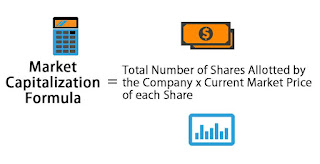Market Capitalization
Market capitalization, commonly referred to as market cap, serves as a pivotal financial metric in assessing the size and worth of publicly traded companies. It offers investors valuable insights into a company's value and its relative position within the market. This comprehensive article aims to demystify the concept of market capitalization by exploring its definition, calculation methods, and significance for investors. Understanding market capitalization empowers investors to make informed decisions when evaluating investment opportunities and constructing diversified portfolios.
What is Market Capitalization?
Market capitalization denotes the total value of a company's outstanding shares of stock in the market. It is derived by multiplying the company's current share price by the total number of outstanding shares. Market cap encapsulates the market's collective perception of a company's worth, taking into account factors such as size, growth prospects, and industry competitiveness. This crucial metric allows companies to be categorized into various segments, including large-cap, mid-cap, and small-cap, based on their market value.
Calculation Methods
The determination of market capitalization depends on the availability of stock price data and the types of shares outstanding. The most common method involves multiplying the current market price by the total outstanding shares, which is known as the traditional market cap calculation. Another approach, known as the free float market cap, considers only the freely traded shares, excluding restricted stock and closely held shares. Analysts may also use a weighted average market cap, which factors in the number of shares and their respective prices over a specific period.
Significance of Market Capitalization
Market capitalization holds immense significance for investors as it provides a quick assessment of a company's size and value relative to its peers. Large-cap companies typically have market capitalizations exceeding $10 billion, signifying well-established, widely recognized entities. Mid-cap companies fall within the range of $2 billion to $10 billion, while small-cap companies have market caps below $2 billion. Each segment possesses distinct characteristics and implications for investment. Investors often employ market capitalization as a factor when constructing investment portfolios, as it aids in determining the level of risk and potential returns associated with different segments.
Furthermore, market capitalization serves as a benchmark for index construction. Prominent stock market indices, such as the S&P 500 and the Dow Jones Industrial Average, use market cap as a criterion for including companies within their portfolios. This weighting methodology ensures that companies with larger market capitalizations have a more substantial impact on the index's performance.
Limitations of Market Capitalization
While market capitalization is a widely used metric, it possesses certain limitations. Firstly, market cap does not reflect a company's financial health or its ability to generate profits. It solely represents the market's perception of its value at a given point in time. Companies with high market capitalizations may not necessarily be financially strong, and vice versa.
Moreover, market capitalization is susceptible to short-term factors such as stock price volatility, market sentiment, or even market manipulation. These factors can lead to fluctuations in market cap, potentially distorting the true value of a company. Investors should, therefore, exercise caution when solely relying on market capitalization to make investment decisions and consider other fundamental indicators such as revenue, earnings, and debt levels.
Market capitalization serves as a fundamental metric for evaluating a company's size and value in the market. By comprehending market cap and its calculation methods, investors gain the ability to navigate the financial landscape and make well-informed decisions. It is crucial, however, to recognize the limitations of market capitalization and employ it in conjunction with other financial indicators for a comprehensive Guide.


Comments
Post a Comment